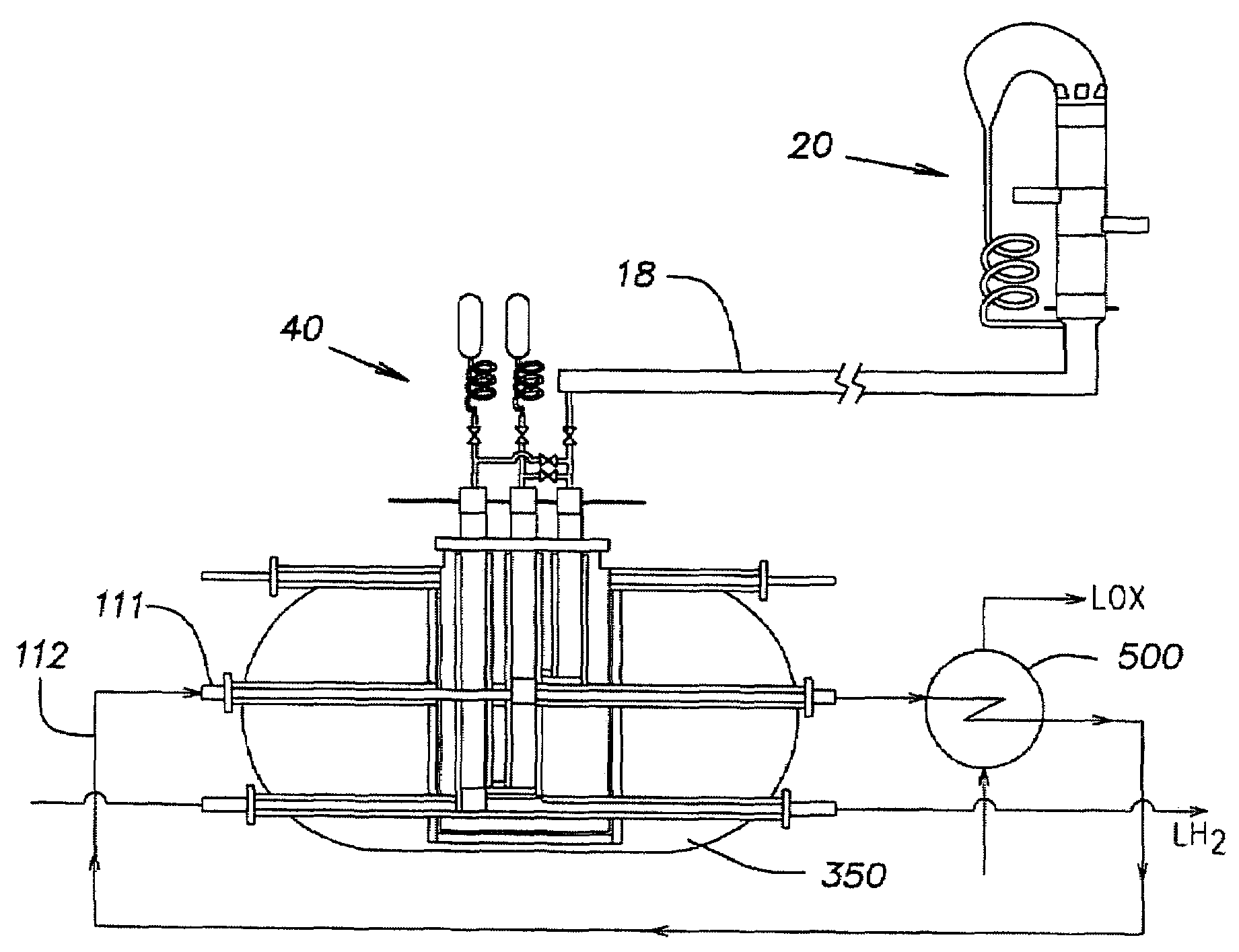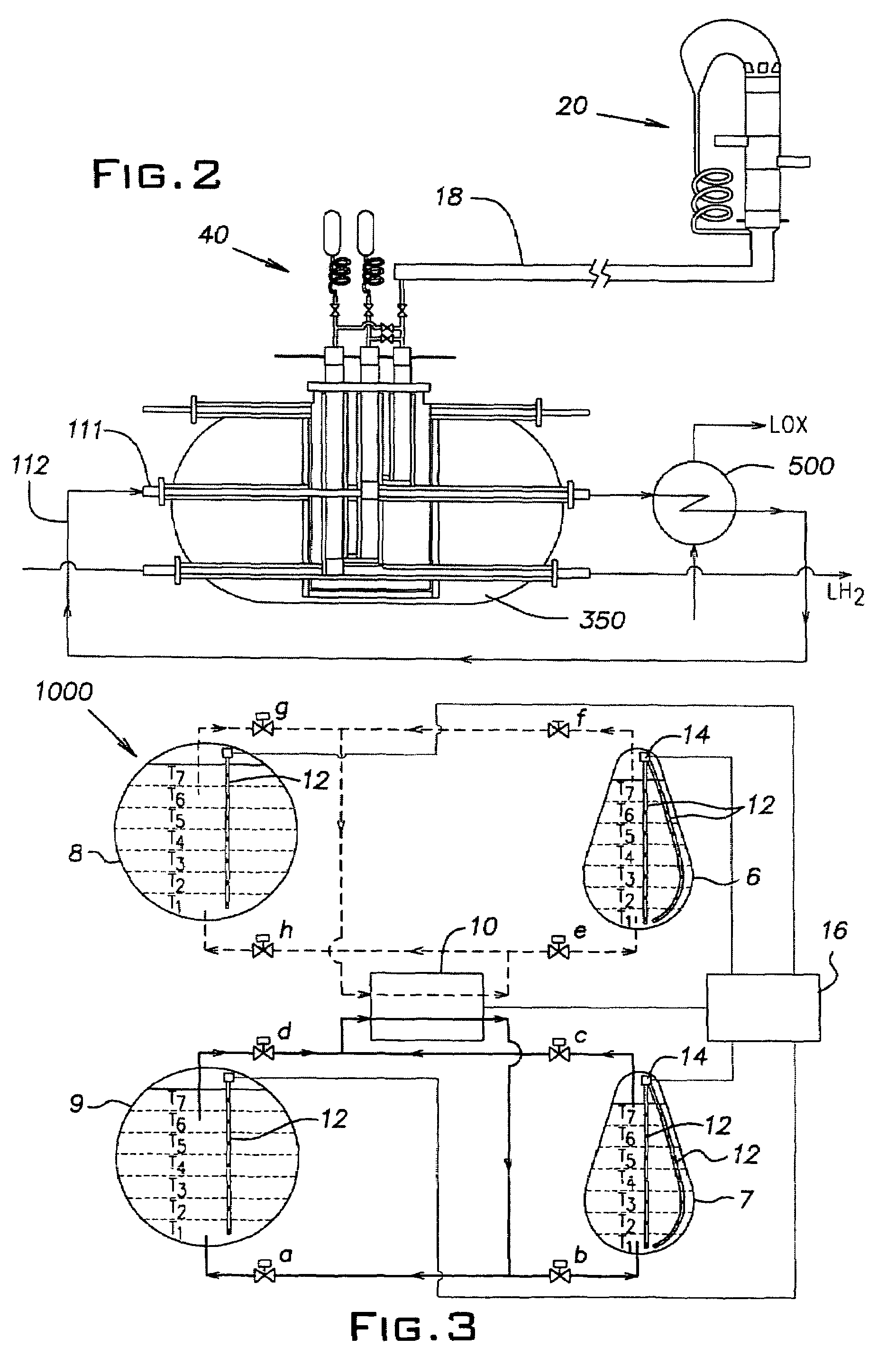Densifier for simultaneous conditioning of two cryogenic liquids
a densifier and cryogenic liquid technology, applied in the direction of machines/engines, lighting and heating apparatus, container discharging methods, etc., can solve the problems of reducing the take-off weight and payload capacity, reducing the requirements of pressurizing gas, and affecting the current apparatus and techniques for densifying cryogenic propellants
- Summary
- Abstract
- Description
- Claims
- Application Information
AI Technical Summary
Problems solved by technology
Method used
Image
Examples
first embodiment
[0031] the densifier has three principal components; an oscillatory power source, a resonance tube 18, and a two-stage orifice pulse tube refrigerator (OPTR) 40. Referring to FIG. 1, a fully acoustic densifier 10 is shown having an acoustic heat engine as the oscillatory power source. By fully acoustic, it is meant that no mechanical energy input (and therefore no moving parts) are present or required in the densifier 10; oscillatory acoustical power generated by the acoustic heat engine provides the necessary power to the OPTR 40 for generating net refrigeration power therein. Preferably, the acoustic heat engine is a thermoacoustic prime mover 20 as shown in FIG. 1. The OPTR 40 utilizes acoustical power generated in the prime mover 20 to generate net refrigeration power to supercool cryogenic propellants such as liquid oxygen (LOX) and liquid hydrogen (LH2).
[0032]Preferably, the prime mover 20 is a Thermoacoustic Stirling Heat Engine (TASHE). TASHE heat engines are generally known...
second embodiment
[0058]Referring to FIG. 2, a fully acoustic densifier 10 is shown as in FIG. 1, with a secondary heat exchanger 500 connected to the first cryogenic passage 111 via an inert recycle passage 112. In this embodiment, an inert cryogenic liquid, such as liquid nitrogen, flows through the inert recycle passage 112 (and first cryogenic passage 111), and is cooled by the common thermal block 210 in place of liquid oxygen. (LH2 is still densified in cold heat exchanger 205 as before). Cooled liquid nitrogen is subsequently fed into secondary heat exchanger 500 to separately densify liquid oxygen, some distance from the hydrogen stream flowing through the second cryogenic passage 222. It should be noted that this embodiment is less preferred because cooling efficiency for oxygen will be significantly lower due to heat leak to the cooled nitrogen stream prior to entering secondary heat exchanger 500. In addition, the normal melting point of liquid nitrogen is 63.14 K meaning that LOX cannot b...
PUM
 Login to View More
Login to View More Abstract
Description
Claims
Application Information
 Login to View More
Login to View More - R&D
- Intellectual Property
- Life Sciences
- Materials
- Tech Scout
- Unparalleled Data Quality
- Higher Quality Content
- 60% Fewer Hallucinations
Browse by: Latest US Patents, China's latest patents, Technical Efficacy Thesaurus, Application Domain, Technology Topic, Popular Technical Reports.
© 2025 PatSnap. All rights reserved.Legal|Privacy policy|Modern Slavery Act Transparency Statement|Sitemap|About US| Contact US: help@patsnap.com



